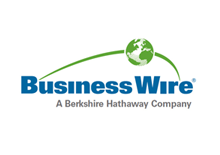Global Hydraulic Fluid Markets, Forecast to 2025 - Presents Shares for Mineral, Synthetic and Bio-based Oils - ResearchAndMarkets.com
The "Hydraulic Fluid Market by Point of Sale (OEM, Aftermarket), Base Oil (Mineral Oil, Synthetic Oil, Bio-based Oil), End-use Industry (Construction, Metal & Mining, Agriculture, Oil & Gas, Transportation, Cement Production), Region - Global Forecast to 2025" report has been added to ResearchAndMarkets.com's offering.
The global hydraulic fluid market is expected to reach USD 9 billion by 2025 from USD 7.7 billion in 2020, at a CAGR of 3.1% from 2020 to 2025.
The growth is primarily due to the massive industrial growth in Asia-Pacific and the Middle East & Africa, coupled with the rise in process automation in most of the industries. The rapid growth in the end-use industries, including construction, metal & mining, oil & gas, food processing, and cement production, is expected to drive the demand for hydraulic fluid in the next five years. The factors restraining the growth of this market are the high cost of synthetic and bio-based hydraulic fluid.
OEM to be the faster-growing point of sale segment of the global hydraulic fluid market during the forecast period.
OEM is expected to be the faster-growing segment during the period from 2020 to 2025. This is attributed to the development of new hydraulic fluid products with better properties and extended life. Hence, more the life of the initial hydraulic fluid, less the maintenance cycle of the equipment.
Mineral oil is the largest segment in the global hydraulic fluid market.
Mineral oil was the largest segment in the global hydraulic fluid market in 2019. The easy availability and low cost of mineral oil-based hydraulic fluid drive the demand for this segment. There is growing demand for these hydraulic fluids from APAC and the Middle East & Africa. However, the mineral oil-based hydraulic fluid segment in North America and Europe will register low growth due to the slow economic growth and change in demand patterns.
Construction is the largest end-use industry of hydraulic fluid.
The need for hydraulic fluid is high in the construction industry. The rising construction activities, especially in the residential sector of China and the increasing infrastructural developments in India, are expected to fuel the demand for hydraulic fluid in the construction industry.
APAC is expected to be fastest-growing market during the forecast period.
APAC is the largest hydraulic fluid market. The high growth of the emerging economies and the increasing disposable income in the region make APAC an attractive market for hydraulic fluid. The tremendous growth of industrial production and increased trade are primarily responsible for the high consumption of hydraulic fluid.
The key players profiled in the report include Royal Dutch Shell PLC (Netherlands), ExxonMobil (US), BP p.l.c. (UK), Chevron Corporation (US), Total S.A. (France), Petrochina Company Limited (China), Idemitsu Kosan Co. Ltd. (Japan), Sinopec Limited (China), Fuchs Petrolub AG (Germany), Valvoline (US), Lukoil (Russia), Petronas (Malaysia), Gazprom Neft (Russia), and Pertamina (Indonesia).
Research Coverage
This report segments the market for hydraulic fluid based on point of sale, base oil, end-use industry, and region, and provides estimations for the overall market size across various regions. A detailed analysis of the key industry players has been conducted to provide insights into their business overviews, products & services, and key strategies associated with the market for hydraulic fluid.
Key Topics Covered
1 Introduction
2 Research Methodology
3 Executive Summary
4 Premium Insights
4.1 Attractive Opportunities in the Hydraulic Fluid Market
4.2 APAC Hydraulic Fluid Market, by Base Oil and Country, 2019
4.3 Hydraulic Fluid Market, by Region
4.4 Hydraulic Fluid Market, by Key Countries
5 Market Overview
5.1 Market Dynamics
5.1.1 Drivers
5.1.1.1 Massive Industrial Growth in APAC and the Middle East & Africa
5.1.1.2 Improved Quality of Hydraulic Fluids
5.1.1.3 Growing Automotive Industry in APAC and the Middle East & Africa
5.1.1.4 Growing Demand for Processed Food
5.1.1.5 Expansion of Refinery Capacities Driving the Market for Group II and Group III Base Oil
5.1.1.6 Increasing Demand from Marine Application
5.1.2 Restraints
5.1.2.1 High Cost of Synthetic and Bio-Based Hydraulic Fluid
5.1.2.2 Shift Toward Synthetic Hydraulic Fluid Shrinking Overall Demand for Hydraulic Fluid
5.1.2.3 Technological Advancements
5.1.2.4 Stringent Environmental Regulations
5.1.3 Opportunities
5.1.3.1 Rising Trend of Using Bio-Based Hydraulic Fluid
5.1.3.2 Availability of Semi-Synthetic Hydraulic Fluid
5.1.3.3 Availability of Zinc-Free (Ashless) Hydraulic Fluid
5.1.3.4 Industrial Growth in BRIC
5.1.4 Challenges
5.1.4.1 Volatile Crude Oil Prices
5.2 Shift in Revenue Streams Due to Megatrends in End-Use Industries
5.3 Porter's Five Forces Analysis
5.3.1 Threat of New Entrants
5.3.2 Threat of Substitutes
5.3.3 Bargaining Power of Suppliers
5.3.4 Bargaining Power of Buyers
5.3.5 Intensity of Competitive Rivalry
5.4 Value Chain Analysis
5.4.1 Raw Materials
5.4.2 Blending
5.4.3 Distribution
5.4.4 End-Use Industry
5.5 Average Selling Price Trend
5.6 Lubricants Industry Ecosystem
5.7 Case Studies
5.8 Industry Outlook
5.8.1 GDP Trends and Forecast of Major Economies
5.8.2 Mining
5.9 Covid-19 Impact on Hydraulic Fluid Market
5.9.1 Disruption in Major End-Use Industries
5.9.2 Disruption in Metal & Mining Industry
5.9.2.1 Impact on Customers' Output and Strategies to Resume/Improve Production
5.9.2.2 Customer's Most Impacted Regions
5.9.2.3 Risk Assessment and Opportunities
5.9.2.4 Viewpoint on Growth Outlook and New Market Opportunities
5.9.3 Disruption in the Construction Industry
5.9.3.1 Impact on Customers' Output and Strategies to Resume/Improve Production
5.9.3.2 Customer's Most Impacted Regions
5.9.3.3 Viewpoint on Growth Outlook and New Market Opportunities
5.9.4 Disruption in the Oil & Gas Industry
5.9.4.1 Impact on Customers' Output and Strategies to Resume/Improve Production
5.9.4.2 Customer's Most Impacted Regions
5.9.4.3 Viewpoint on Growth Outlook and New Market Opportunities
5.9.5 Disruption in the Automotive Industry
5.9.5.1 Impact on Customers' Output and Strategies to Resume/Improve Production
5.9.5.2 Customer's Most Impacted Regions
5.9.5.3 Risk Assessment and Opportunities
5.9.5.4 Viewpoint on Growth Outlook and New Market Opportunities
5.10 Regional Impact of Covid-19
5.10.1 Conflict Between OPEC and Non-OPEC Countries
5.10.2 Middle East & Africa
5.10.3 North America
5.10.4 Europe
5.10.5 APAC
5.10.6 South America
5.11 Regulatory Framework
5.11.1 Stages of Regulatory Framework in China
5.11.2 APAC
5.11.3 Europe
5.11.4 North America
5.11.5 South America
5.11.6 Middle East & Africa
6 Hydraulic Fluid Market, by Point of Sale
6.1 Introduction
6.1.1 OEM
6.1.2 Aftermarket
7 Hydraulic Fluid Market, by Base Oil
7.1 Introduction
7.2 Mineral Oil
7.2.1 Low Cost to Boost Demand for Mineral Oil-Based Hydraulic Fluids
7.3 Synthetic Oil
7.3.1 Growing Industrial Production Increasing the Demand for High-Performance Hydraulic Fluids
7.3.2 Polyalphaolefins (Pao)
7.3.3 Polyalkylene Glycols
7.3.4 Esters
7.3.5 Group III (Hydrocracking)
7.4 Bio-Based Oil
7.4.1 Rising Awareness About Bio-Based Hydraulic Fluid
8 Hydraulic Fluid Market, by End-Use Industry
8.1 Introduction
8.2 Construction
8.2.1 Rising Demand from APAC to Be the Main Driver for the Market
8.3 Metal & Mining
8.3.1 Second-Largest Consumer of Hydraulic Fluids
8.3.2 Mining Industry Trends
8.4 Agriculture
8.4.1 Steadily Growing Global Food Demand to Increase the Demand for Hydraulic Fluids
8.4.2 Agriculture Industry Trends
8.5 Oil & Gas
8.5.1 Need for Long-Term Stability and Smooth Functioning of Machinery
8.5.2 Oil & Gas Industry Trends
8.6 Transportation
8.6.1 Marine and Aviation End-Use Industries to Drive the Market
8.6.2 Marine
8.6.3 Aviation
8.6.4 Automotive
8.7 Cement Production
8.7.1 Need for High-Performance Hydraulic Fluids
8.8 Food Processing
8.8.1 Rising Demand for Processed Food
8.9 Others
9 Hydraulic Fluid Market, by Region
9.1 Introduction
9.2 APAC
9.2.1 China
9.2.1.1 Largest Cement Producer in the World
9.2.2 India
9.2.2.1 Growing Construction Industry Posing High Prospects for the Market
9.2.3 Japan
9.2.3.1 Advanced Technology and Innovation-Driven Approach Across All the Sectors
9.2.4 South Korea
9.2.4.1 World's Largest Automotive Industry to Drive the Hydraulic Fluid Market
9.2.5 Australia & New Zealand
9.2.5.1 Mining Industry Increasing Demand for Hydraulic Fluids
9.2.6 Thailand
9.2.6.1 Viable Economic Policies Helping Market Growth
9.2.7 Indonesia
9.2.7.1 Established Crude Oil and Mining Sectors Influencing the Market Positively
9.3 North America
9.3.1 US
9.3.1.1 Presence of Major Oil & Gas Giants Increasing the Consumption of Hydraulic Fluids
9.3.2 Canada
9.3.2.1 Market is Witnessing Strong Competition from Emerging Economies of APAC and the Middle East & Africa
9.3.3 Mexico
9.3.3.1 Booming Industrialization and Rising Population to Increase Demand for Hydraulic Fluids
9.4 Europe
9.4.1 Russia
9.4.1.1 World's Fifth-Largest Steel Producer Offers Ample Opportunities to Hydraulic Fluid Manufacturers
9.4.2 Germany
9.4.2.1 Growing Food Processing Industry to Boost Market Growth
9.4.3 UK
9.4.3.1 Government's Plans for Infrastructure Spending to Drive the Market
9.4.4 France
9.4.4.1 Growth in End-Use Industries of Hydraulic Fluids
9.4.5 Italy
9.4.5.1 World's Seventh-Largest Steel Exporter Offering Ample Growth Opportunities
9.4.6 Spain
9.4.6.1 Spain Food Processing Sector to Have Positive Impacts on the Market
9.5 Middle East & Africa
9.5.1 South Africa
9.5.1.1 Demand for Platinum Aiding Market Growth
9.5.2 Turkey
9.5.2.1 Immense Opportunities for Market Growth Due to Industrialization
9.5.3 Iran
9.5.3.1 Government Expenditure on Infrastructural Growth to Propel Market Growth
9.6 South America
9.6.1 Brazil
9.6.1.1 Rapidly Expanding Economy, Stimulated by Increasing Investments, to Drive the Market
9.6.2 Argentina
9.6.2.1 Growing Construction Industry to Boost the Demand for Hydraulic Fluids
10 Competitive Landscape
10.1 Overview
10.2 Competitive Leadership Mapping (Overall Market)
10.2.1 Innovators
10.2.2 Visionary Leaders
10.2.3 Emerging Companies
10.3 Strength of Product Portfolio
10.4 Business Strategy Excellence
10.5 Competitive Leadership Mapping (SMSE)
10.5.1 Progressive Companies
10.5.2 Responsive Companies
10.5.3 Dynamic Companies
10.5.4 Starting Blocks
10.6 Strength of Product Portfolio
10.7 Business Strategy Excellence
10.8 Market Share of Key Players
10.9 Competitive Situation and Trends
10.9.1 Expansion
10.9.2 Contract & Agreement
10.9.3 Acquisition
10.9.4 Joint Venture
10.9.5 New Product Launch
11 Company Profiles
11.1 Royal Dutch Shell PLC
11.2 Exxonmobil Corporation
11.3 BP PLC
11.4 Chevron Corporation
11.5 Total S.A.
11.6 Petrochina Company Limited
11.7 Idemitsu Kosan Co. Ltd.
11.8 Sinopec Limited
11.9 Fuchs Petrolub AG
11.10 JXTG Holdings, Inc.
11.11 Valvoline
11.12 Lukoil
11.13 Petronas
11.14 Pertamina
11.15 Gazprom Neft
11.16 Indian Oil Corporation Limited (IOCL)
11.17 Phillips 66
11.18 Hindustan Petroleum Corporation Limited (HPCL)
11.19 Petrobras
For more information about this report visit https://www.researchandmarkets.com/r/wwo9ju
View source version on businesswire.com: https://www.businesswire.com/news/home/20200528005574/en/





